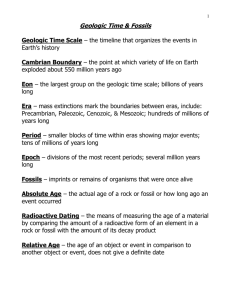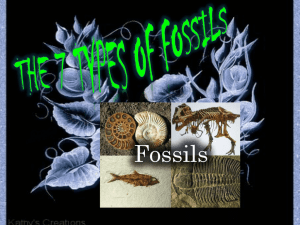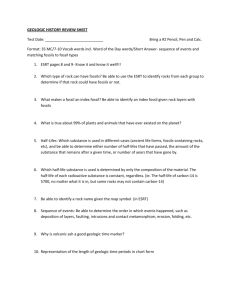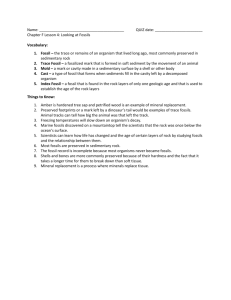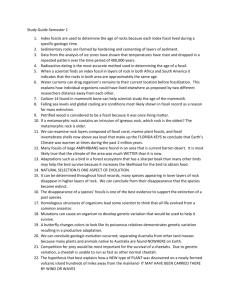Geologic History Test Outline: ESRT & Fossil Analysis
advertisement
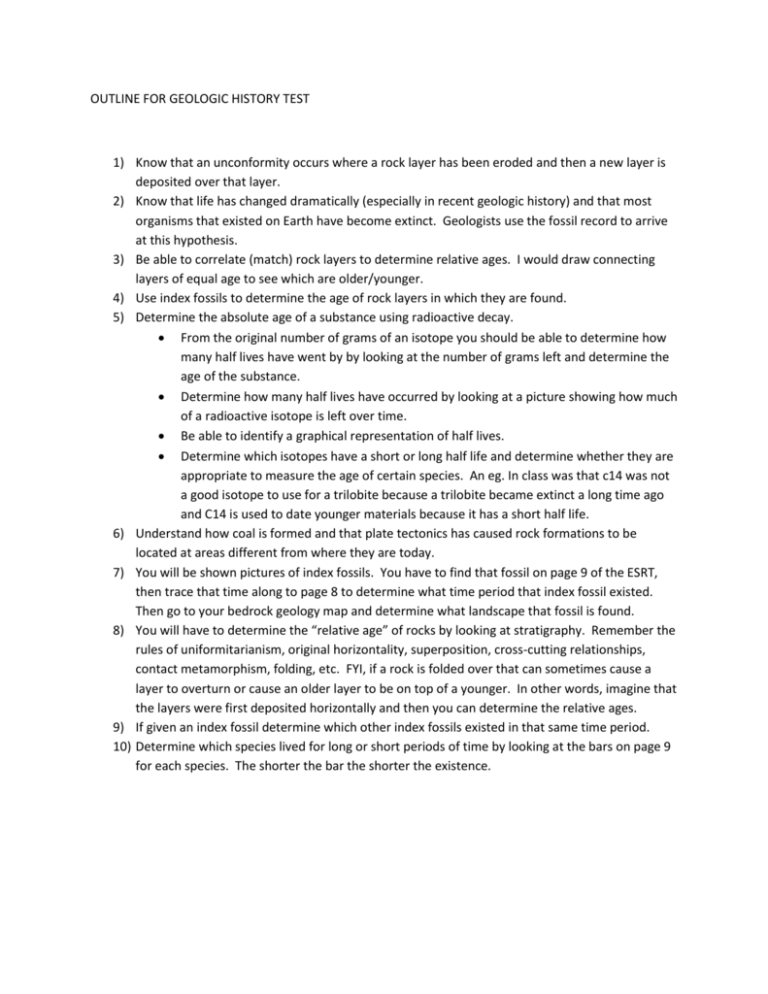
OUTLINE FOR GEOLOGIC HISTORY TEST 1) Know that an unconformity occurs where a rock layer has been eroded and then a new layer is deposited over that layer. 2) Know that life has changed dramatically (especially in recent geologic history) and that most organisms that existed on Earth have become extinct. Geologists use the fossil record to arrive at this hypothesis. 3) Be able to correlate (match) rock layers to determine relative ages. I would draw connecting layers of equal age to see which are older/younger. 4) Use index fossils to determine the age of rock layers in which they are found. 5) Determine the absolute age of a substance using radioactive decay. From the original number of grams of an isotope you should be able to determine how many half lives have went by by looking at the number of grams left and determine the age of the substance. Determine how many half lives have occurred by looking at a picture showing how much of a radioactive isotope is left over time. Be able to identify a graphical representation of half lives. Determine which isotopes have a short or long half life and determine whether they are appropriate to measure the age of certain species. An eg. In class was that c14 was not a good isotope to use for a trilobite because a trilobite became extinct a long time ago and C14 is used to date younger materials because it has a short half life. 6) Understand how coal is formed and that plate tectonics has caused rock formations to be located at areas different from where they are today. 7) You will be shown pictures of index fossils. You have to find that fossil on page 9 of the ESRT, then trace that time along to page 8 to determine what time period that index fossil existed. Then go to your bedrock geology map and determine what landscape that fossil is found. 8) You will have to determine the “relative age” of rocks by looking at stratigraphy. Remember the rules of uniformitarianism, original horizontality, superposition, cross-cutting relationships, contact metamorphism, folding, etc. FYI, if a rock is folded over that can sometimes cause a layer to overturn or cause an older layer to be on top of a younger. In other words, imagine that the layers were first deposited horizontally and then you can determine the relative ages. 9) If given an index fossil determine which other index fossils existed in that same time period. 10) Determine which species lived for long or short periods of time by looking at the bars on page 9 for each species. The shorter the bar the shorter the existence.


